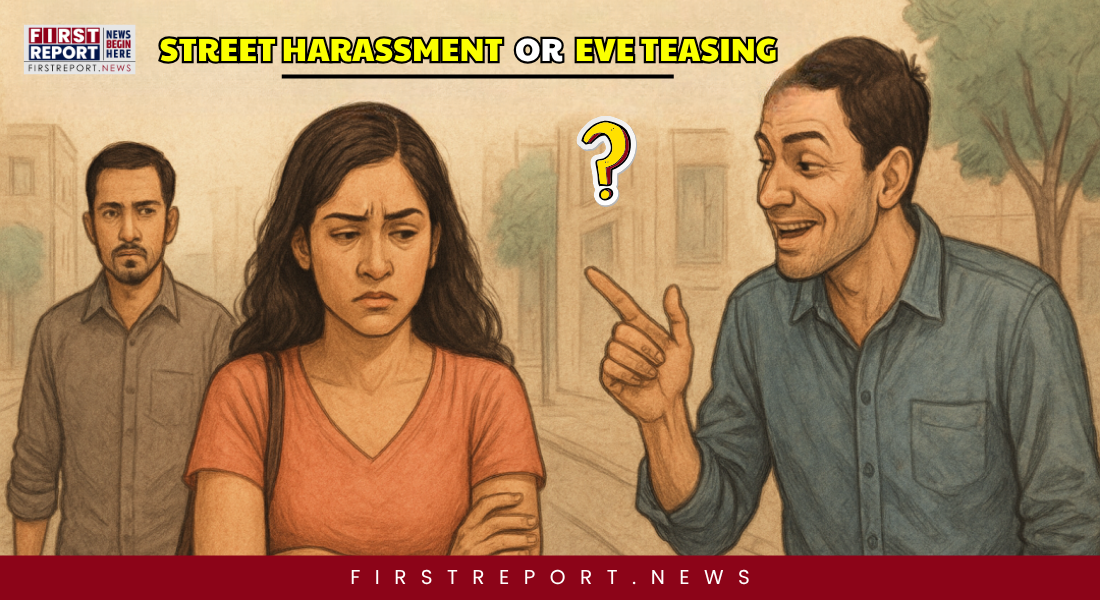“Freedom is not worth having if it does not include the freedom to make mistakes.” — Mahatma Gandhi. Street harassment, wrongly called “eve teasing”, continues to limit women’s freedom across India. It causes fear and discomfort in public spaces. This social ill needs clear language, strong action, and honest discussion to stop it.
Street harassment affects thousands of women across India every day. Though often called “eve teasing”, this term hides the seriousness of the problem.
According to the National Crime Records Bureau (NCRB)
- Over 87,000 cases of crimes against women involved some form of harassment in public spaces
- 1 in 3 women in urban areas face verbal or physical harassment during their daily commute
- Only 16% of victims report such incidents to the police
What is Street Harassment?
Street harassment includes unwanted attention or actions in public places. It can be:
- Staring or leering
- Making vulgar comments or sounds
- Following someone
- Touching without consent
- Taking photos without permission
These actions are not harmless jokes. They cause fear, discomfort, and anger. Many women change routes, avoid public transport, or dress differently due to this behaviour.
The Problem with the Term “Eve Teasing”
The phrase “eve teasing” is often used in India. However, it:
- Makes the issue sound like playful mischief
- Ignores the victim’s fear and stress
- Protects the harasser by reducing the seriousness
- Blames the woman by linking it to the idea of ‘Eve’ from religion
Also Read: Crime Against Women: What Are the Real Solutions?
It is important to call it what it is — street harassment, not teasing.
Who Faces It the Most?
| Group | Risk Level |
| School and college girls | Very high |
| Working women | High |
| Women in public transport | Very high |
| Women in small towns | Moderate to high |
Young girls and working women are often targets, especially in crowded or poorly lit areas.
Common Places Where It Happens
- Bus stops and railway stations
- Marketplaces and shopping streets
- Public transport (buses, autos, metro)
- Outside schools, colleges, or offices
- Quiet roads or lanes after dark
Also Read: Women Empowerment: Pros and Cons
How Women Respond
Many women do not report harassment due to fear or shame. Still, responses include:
- Ignoring the harasser
- Avoiding certain areas or clothes
- Informing friends or family
- Taking videos or photos as proof
- In some cases, shouting or confronting
Yet, legal action is rare. This shows a deep gap in support systems.
Role of Law and Society
Legal Provisions under IPC:
- Section 354D: Stalking
- Section 509: Insulting modesty
- Section 354A: Sexual harassment
- Punishment: Up to 3 years in jail, or a fine, or both
But laws alone are not enough. Society must also act. Schools, families, and media must:
- Teach respect for women
- Stop blaming victims
- Support open talk about safety
- Encourage reporting without shame
Also Read: Don’t Be a Victim: Protect Yourself with These Must-Have Women’s Safety Gadgets
Street harassment is not a joke. It is not about fun or mischief. It is an attack on someone’s safety and freedom. The term “eve teasing” must go. It hides the reality. Instead, we must speak clearly, act firmly, and listen to those who suffer in silence. Only then can our streets feel safe for everyone.





